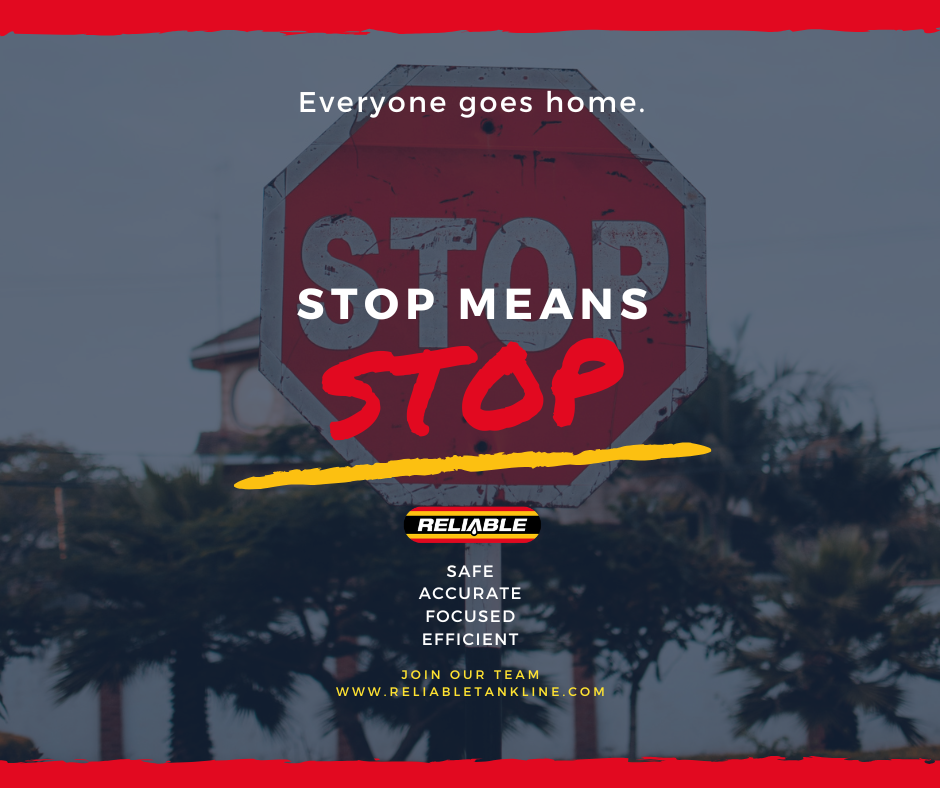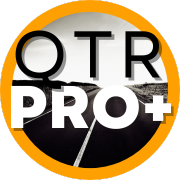2.2 Safe Driving
General Driving Safety
Be a Professional Driver:
Professional driving is made up of skill, determination, and attitude. Successful operation of a tractor requires a high degree of skill, unlimited patience, mental alertness, and defensive driving that can quickly meet any emergency. A professional driver will take diligent care of his/her assigned truck. A dirty cab, a bent fender, or curb marks on tires are not marks of a professional. A driver who is a true professional can justly take pride in his/her work.
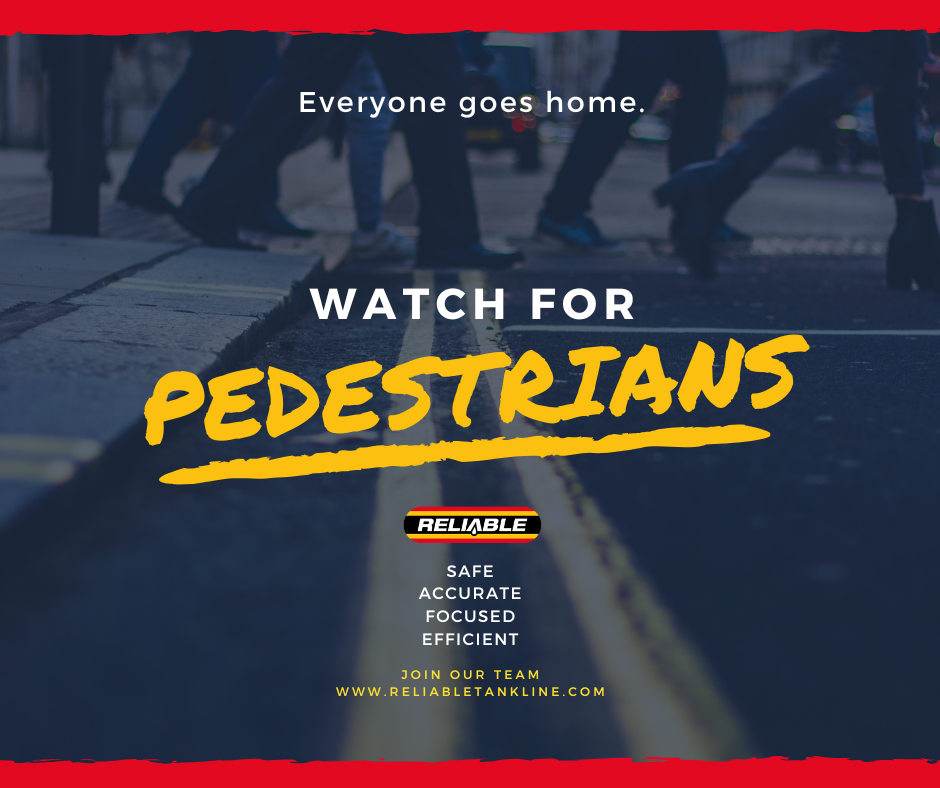
Be a Defensive Driver:
Defensive driving is driving to prevent accidents despite the actions of others, or in the presence of adverse conditions. The most important asset of a driver is the practice of defensive driving. Every driver should realize that driving requires constant alertness to prevent accidents.
Seat Belts
Reliable Tank Line policy, Federal laws, and State laws require seat belts to be worn. Violation of this policy will result in disciplinary action up to and including termination.
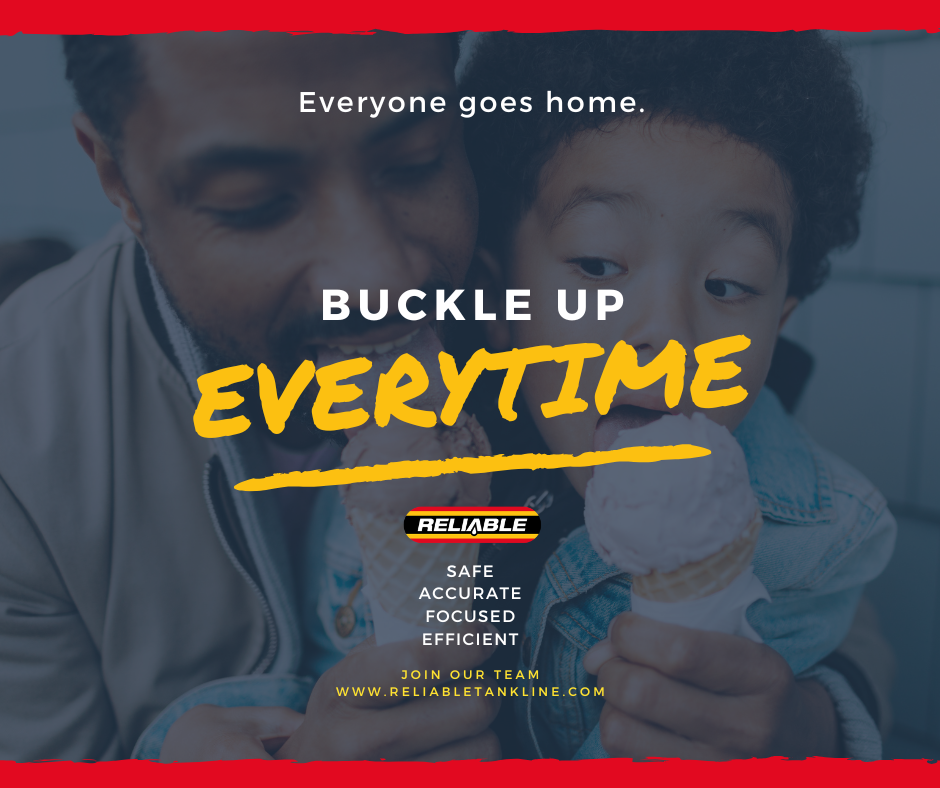
Seat Height
Always operate equipment with driver seat set at a proper height to allow maximum visibility, minimize blind spots, and benefit from full use of all factory installed mirrors.
Weapons
Employees are not to have firearms or other weapons while on company property, driving a company vehicle, or on a customer’s property. This includes visible and concealed weapons, even those for which the proper permits have been obtained. While this list is not all-inclusive, weapons include firearms, knives (with a blade longer than four inches), and explosive materials, or any other objects that could be used to harass, intimidate, or injure another. Violation of this policy will result in disciplinary action up to and including termination.
Speed
Reliable Tank Line’s maximum speed limit is no more than the posted speed limits. Posted speed limits, traffic, weather, and road conditions should dictate speed. Meaning: the posted speed limit may not be the safe speed given travel conditions at the time. The use of a Radar detector in a commercial vehicle is illegal and is therefore not allowed to be in our trucks. All tractor maximum speeds are factory preset. Any adjustment to these settings is subject to disciplinary actions up to and including termination.
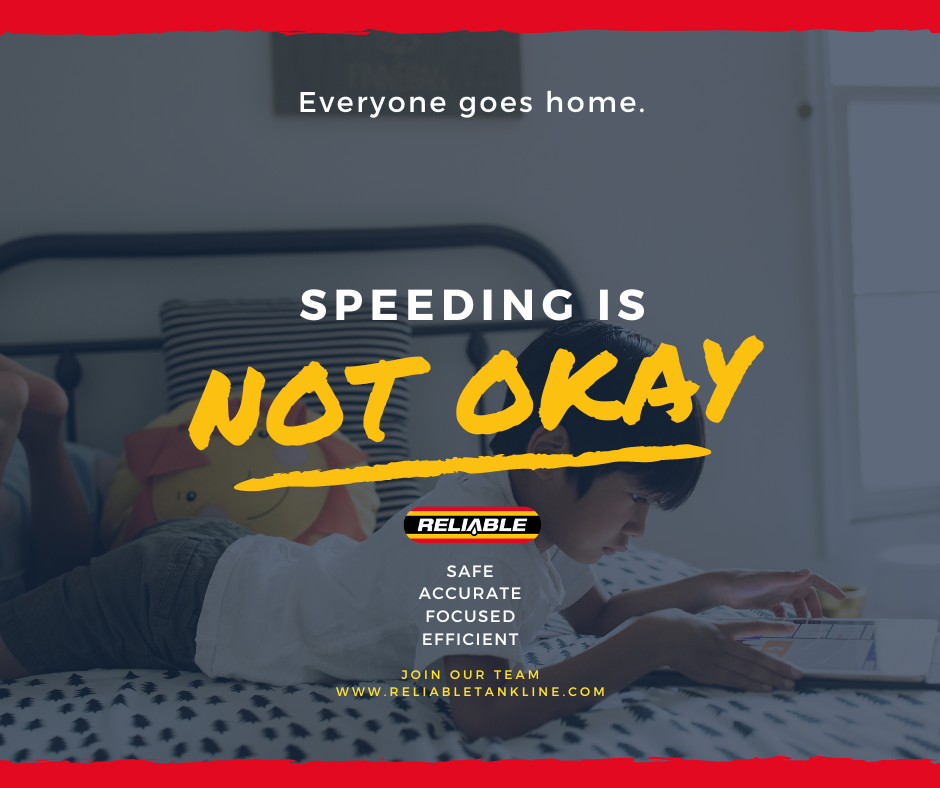
Railroad Crossings
Placarded transports are required to stop at all railroad crossings. Transports must come to a complete stop no more than 50 feet and not less than 15 feet from the nearest rail. Transports must not continue until due caution has been taken and the driver can see the track is clear and safe to continue across. Never shift gears while crossing a track. Truck flashers should be activated at least 100 feet in advance of crossing a railroad. Violation of this policy is subject to disciplinary action up to and including termination.
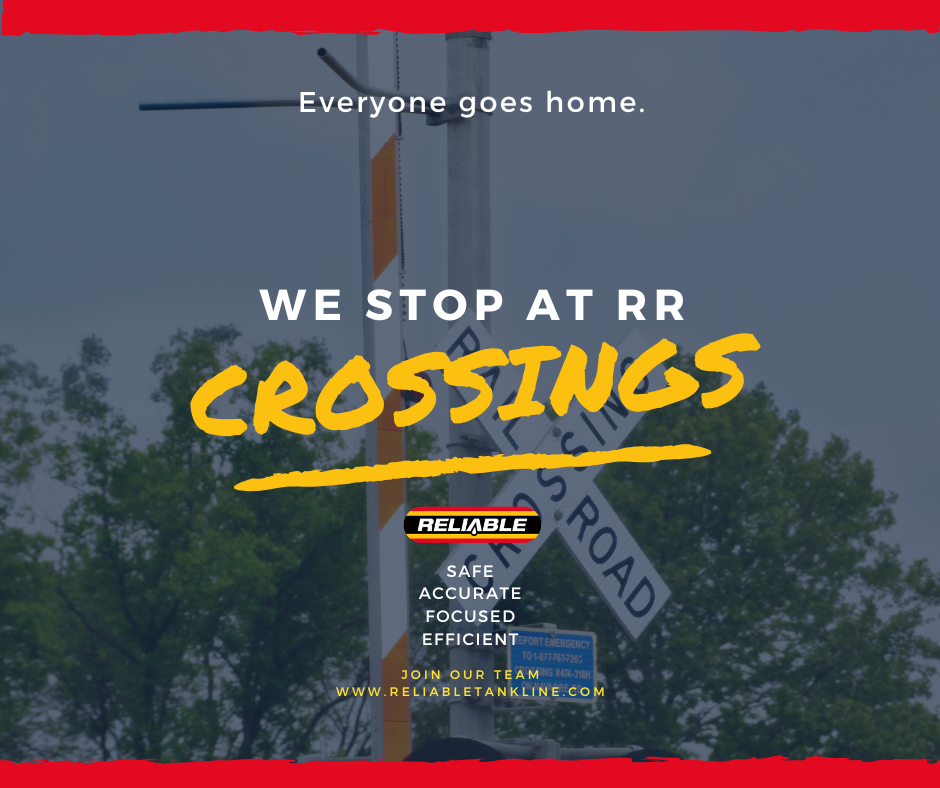
Communications
Safety is our highest priority. Therefore, no telephone use is allowed while driving a Reliable Tank Line vehicle unless using a hands-free device (BluetoothTM) and calls shall be kept to a minimum.
REFER TO: TEXTING WHILE DRIVING/DISTRACTED DRIVING POLICY - KSP 1.09
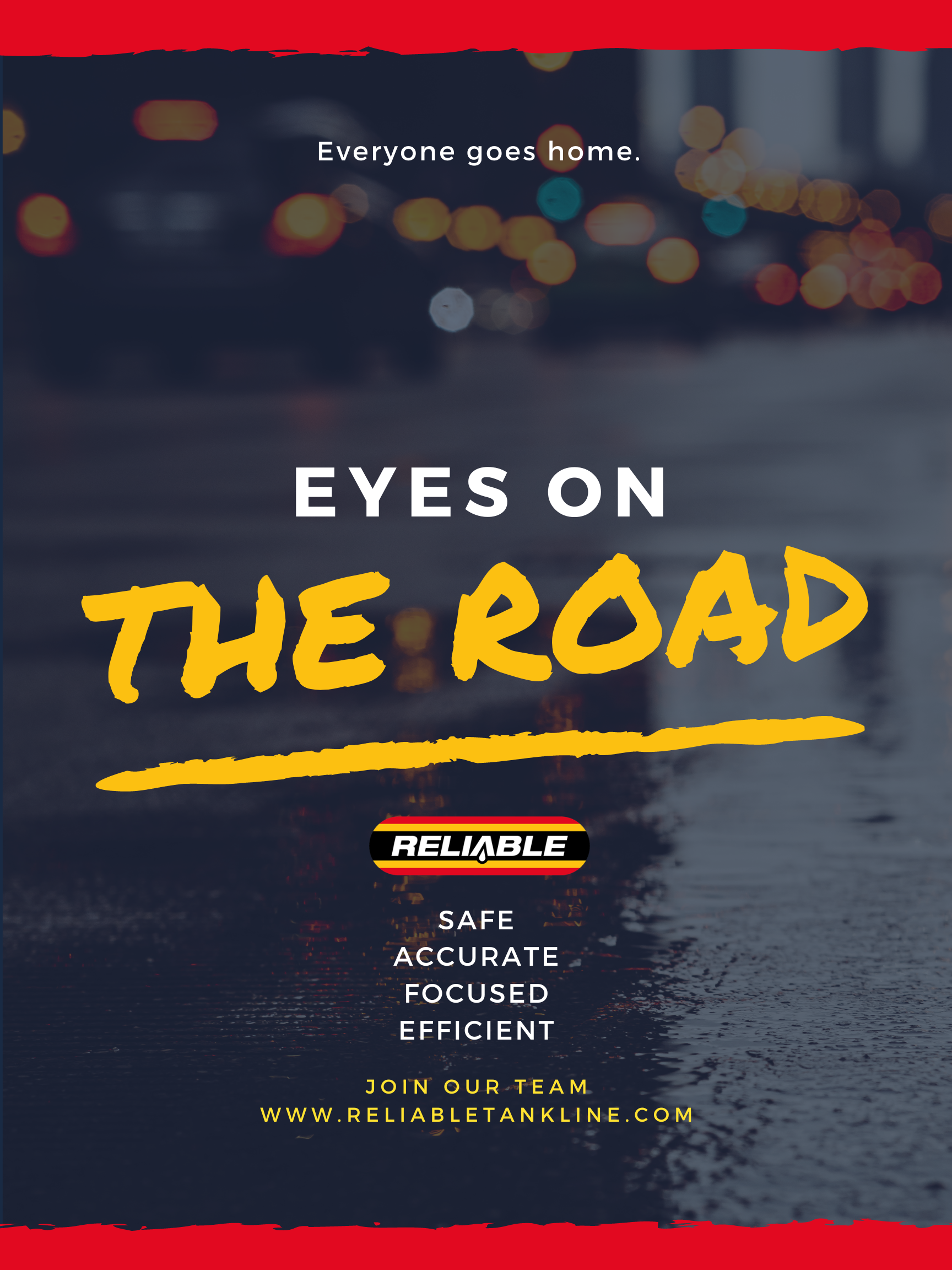
Using Trimble Instinct:
Driver’s communications will take place through the Trimble Instinct system. Drivers will use this system when the truck is parked to read and send messages as a means of communication with dispatch or by using the in-cab, text-to-audio playback option while driving.
Using Tanker Workflow:
Pick-up and delivery data entry will take place through the driver’s use of Tanker Workflow electronic forms via Transflo on the Instinct tablet system, in addition to paper trip tickets and BOL documents as required by Reliable Tank Line customers. Drivers will use this system when the truck is parked to read and enter load information as prompted and send it as a means of communication with 1) dispatch for real-time progress tracking and 2) processing for billing and payroll.
Passengers
Unless authorized by management, the only people that will be allowed in the trucks will be Reliable Tank Line and Quality Oil employees.
Night Driving
- Decrease vehicle speed and do not overdrive the headlights. This means you can stop within the distance you can see—500 feet under ideal conditions.
- Look ahead for obstruction in the road.
- Dim headlights as oncoming traffic approaches.
- Look past oncoming headlights.
- Focus your eyesight on the center of your lane or slightly toward the right shoulder.
Adverse Weather
In the presence of adverse weather conditions, prior to your shift start time, check with dispatch for instructions on how to safely proceed. We will never place a driver in danger or put him/her in a situation in which they are uncomfortable in adverse weather.
Ascending & Descending Grades
Use the vehicle’s engine to help brake while traveling down grades, being careful not to allow the engine to exceed the governed RPMs.
Never take the vehicle out of gear when traveling down a hill. It is against the law, and you could lose control. The air compressor is not pumping fast enough to maintain sufficient air pressure – it could be difficult to get the vehicle back in gear.
When braking the vehicle – start early. It takes much less braking before the unit builds up momentum. Never fan (pump) your brakes. Always use steady brake application to control speed and governed RPMs. Avoid braking with the hand valve, as this will cause excessive heating of the trailer brakes. Using the foot valve will apply even, steady pressure to all brakes.
Backing
Adjust your mirrors so that you can see to back safely. Occasionally, you may request someone to flag traffic or “watch’ for you when backing. Never depend completely on someone else to keep you from backing into obstacles. Safety is your responsibility. If in doubt of where you are backing, take the time to walk to the back of your vehicle and ensure you are safe.
Coupling Tractor & Tractor
- Back the tractor in a straight line toward the front of the trailer, not at an angle.
- Continue backing until the fifth wheel plate contacts the trailer king pin plate.
- Back gently under the trailer until the fifth wheel jaws lock around the trailer king pin.
- With the transmission in low gear, gently pull forward (“tug test”) to feel if the fifth wheel mechanism has engaged.
- Set tractor parking brake (yellow). Place the transmission in neutral, get out of the cab, and hook up the emergency and service air lines to the trailer.
- Get back in the cab; push in the trailer air supply knob (red).
- Listen for any leaking air escaping from the trailer air system.
- Pull trailer air supply to apply trailer spring brakes. With tractor parking brakes and trailer brakes set, walk underneath the trailer directly behind the tractor and visually check to ensure the jaws of the fifth wheel have locked around the king pin (a flashlight may be necessary).
- If the mechanism has properly locked, raise the trailer supports.
REFER TO: LOADED TRAILER DROPPING POLICY - KSP 1.10
Parking
Never stop on an interstate highway, unless absolutely necessary. Even when parked well off the shoulder, following traffic could plow into you on the shoulder, especially at night, and even when stopped with lights on. If stopped on the emergency strip at night, activate the emergency flashers and turn other lights off.
DOT requires that you pull well off the highway. Park in approved areas for trucks. Never park your vehicle on the shoulder of any roadway while taking a break or at a meal stop. The only exception is an emergency or breakdown.
EMERGENCY / BREAKDOWN STOPS: Federal and State Laws require the use of warning devices whenever a vehicle is disabled or makes an emergency stop on the traveled part of a highway. (See DOT Safety Rules & Regulations, Part 392, regarding use of turn signals, reflectors, etc., as traffic hazard warnings.) It is the responsibility of every driver to know these rules and their application to day and night driving. Every driver should make every effort to pull his/her unit at least 10 feet off the traveled part of the highway. Pull in at a service station or truck stop whenever possible. Never pull the unit off the shoulder or into fields or grading that will not hold the weight of the vehicle.
EXTENDED STOPS / ENGINE SHUTDOWN: When the engine is warm, allow it to idle for 3-5 minutes before shutting it off. This allows the engine to cool down gradually and keeps oil and water circulating while it is cooling down. Do not leave the engine idling for an extended period of time. This wastes fuel and does not allow maximum engine lubrication while running.
Set the tractor and trailer brake unless specially required otherwise by the terminal. Never use trailer brakes or apply hand valve for emergency parking.
SPECIAL PRECAUTIONS FOR WARNING DEVICES: Drivers should not use any flame-producing warning devices. THIS INCLUDES any first responders and Emergency Services personnel or other motorists. Red emergency reflectors provided in each unit should be used. These are to be placed at intervals of 10, 100, and 1000 feet (about 305 m) behind the vehicle.
Check daily to verify load bar is functioning properly. to do this, with load bar raised, release truck/trailer brakes from in cab and gently attempt to drive away. Trailer brakes should be set, and trailer wheels should not rotate.
Braking
- Anticipate stops.
- When the road or parking lot is slippery from ice, snow, rain, mud, etc., use caution. (Stopping distance increases up to 12 times the distance required to stop on a dry surface.)
- Watch out for mud streaks on the pavement, wet leaves, and new blacktop. (Any wet road is dangerous. However, wet, new, blacktop is especially dangerous.)
- Never brake more suddenly than conditions demand. (Brake well ahead to avoid a jackknife.)
- Remember that the road is usually more hazardous during the first few minutes of rain.
- Never slide the wheels. (A sliding wheel will not stop as quickly, and you lose complete control.)
- Brake prior to entering a curve or turn. (Braking in a curve can cause jackknives and/or overturns.)
- Be aware of vehicles around you. Look for vehicles following too close behind you.
- Depress brakes harder at first and then ease off enough for a smooth stop.
- Know the brake interlock operation – be aware that an antilock tractor with a non-anti-lock trailer will lock the trailer brakes.
Passing and Being Passed
- Before starting to pass, make certain the road is clear ahead—no curves, hills, bridges, or intersections. (Remember, it is always the responsibility of the passing driver to be sure the way is clear.)
- Know your “NO ZONES.” These are areas where other vehicles may not be visible to you (blind spots). Be sure no one is in one of these blind spots prior to changing lanes.
- Never signal following traffic to pass.
- Assist them in passing by staying well to the right in your lane or by slowing down to allow them to complete their pass.
Right Turns
- Give the proper signal at least 100 ft. ahead of your turning point.
- If you are traveling on a multi-lane, one-way road, move into the right lane as soon as safely possible.
- Do not leave enough room on your right for any vehicle to get between you and the curb. Check mirrors frequently to ensure clearance and that no vehicle is trying to pass you on the right side.
Left Turns
- Give the proper signal at least 100 ft. ahead of your turning point.
- Get over to the left early so that your left wheels are close to the center lane.
- Make certain the way is clear before entering the intersection.
- When turning left from more than one left turning lane, keep other vehicles to the driver’s side (left).
